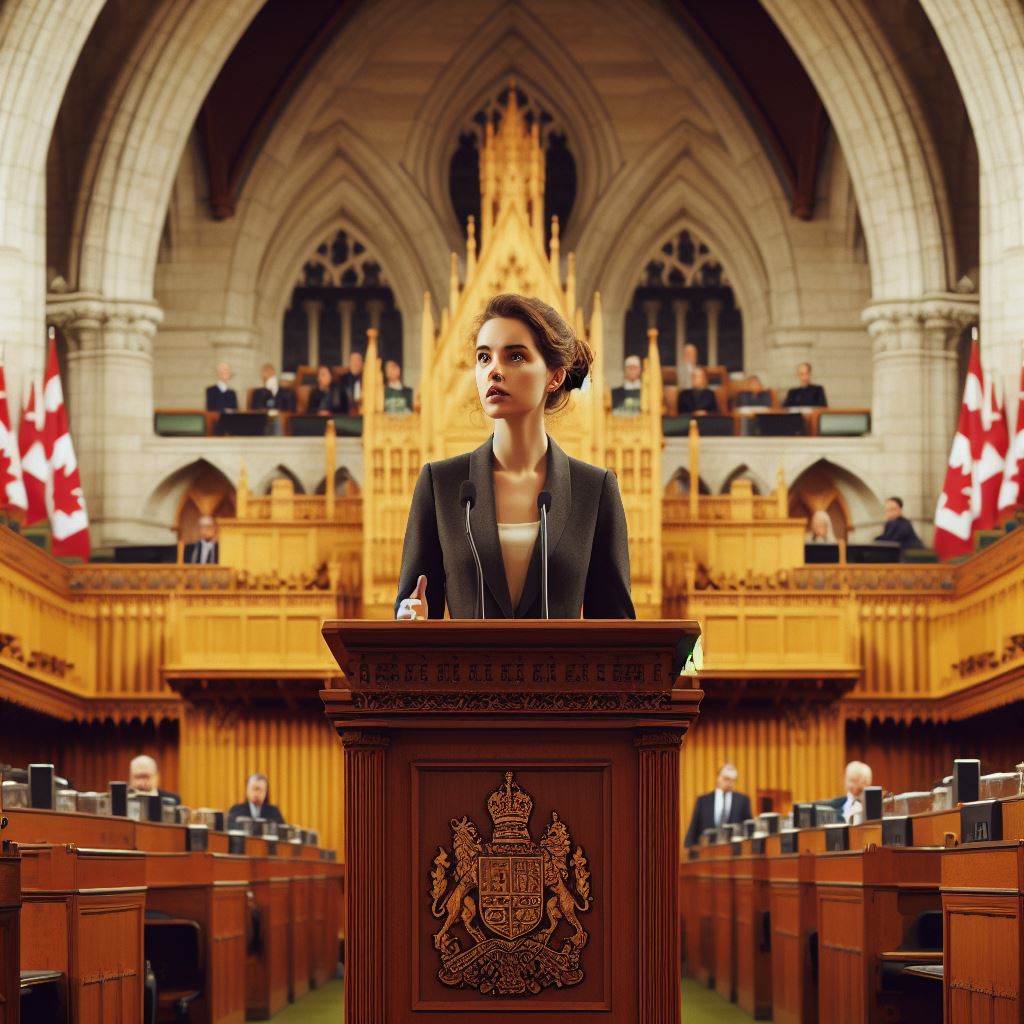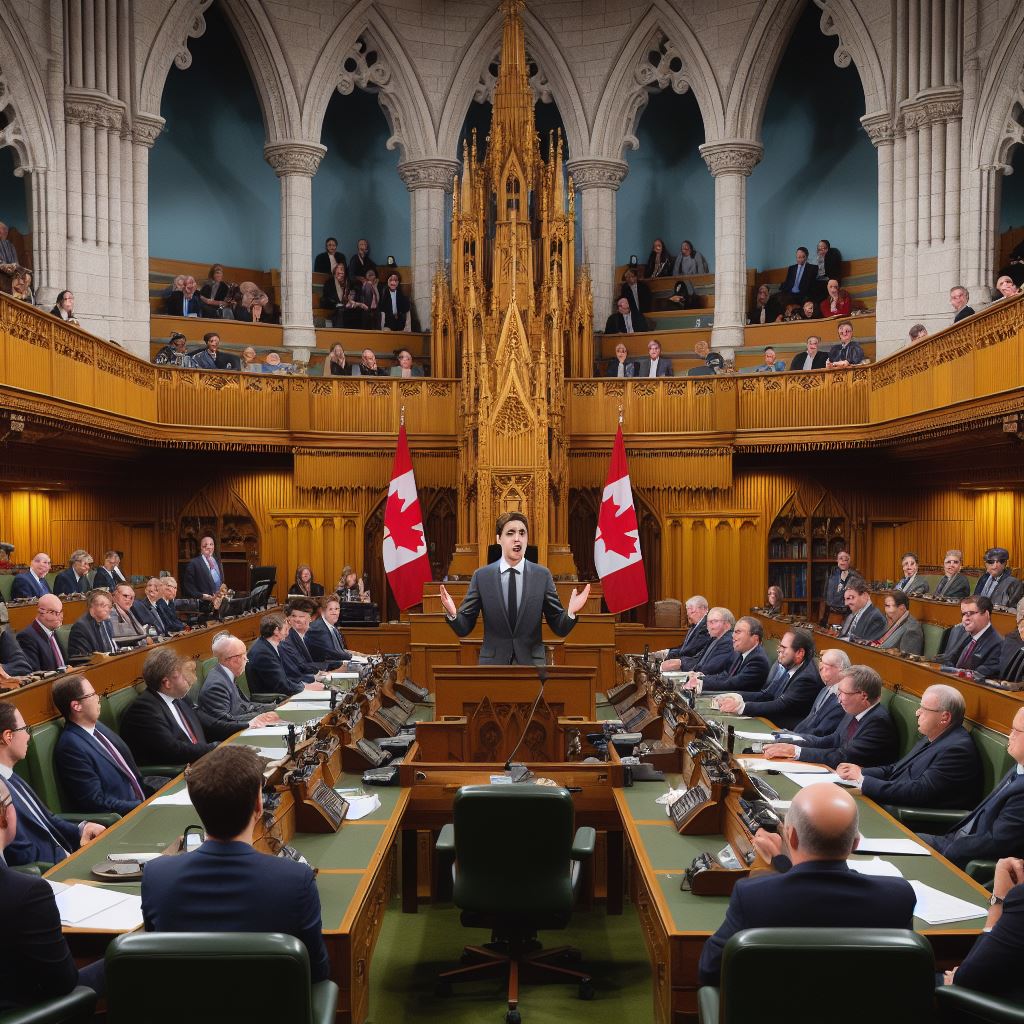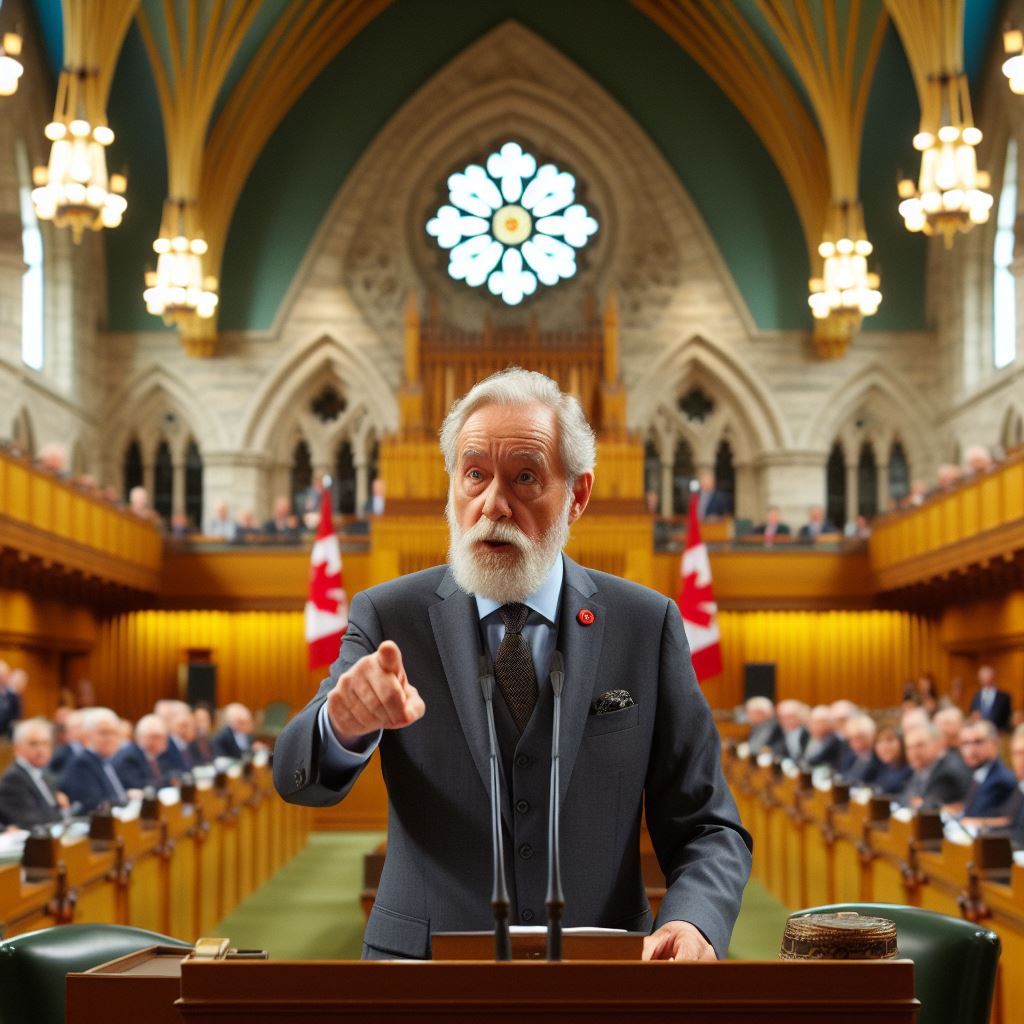Introduction
Understanding the evolution of Canadian political roles is crucial to comprehend the nation’s democratic system.
This blog section provides a brief overview of this topic, delving into its significance.
Against the backdrop of Canada’s vast and diverse landscape, the evolution of political roles encompasses a tapestry of narratives – from the challenges faced by early colonial administrations to the complexities of contemporary federalism.
The interplay of regional dynamics, cultural diversity, and the pursuit of social justice has molded the roles of Canadian politicians, transforming governance into a dynamic force that navigates the delicate balance between tradition and innovation.
This exploration delves into key milestones, examining how political roles have expanded beyond mere governance, embracing advocacy for indigenous rights, environmental stewardship, and the promotion of inclusivity.
The evolving landscape of international relations further amplifies the responsibilities of Canadian politicians, as they engage in diplomacy, trade negotiations, and global partnerships to secure the nation’s interests on the world stage.
As we embark on this journey through the annals of Canadian political history, we unravel the layers of a narrative that not only defines the past but also lays the foundation for a future where political roles continue to adapt, ensuring a resilient and responsive governance that reflects the ever-changing needs of its citizens.
Pre-Confederation Era
The exploration of political roles before Canada became a nation had a significant impact on its development.
The influence of British colonial rule played a crucial role in shaping the political landscape.
Key figures emerged during this time, each contributing to the formation of Canada.
Political roles before Canada became a nation
During the pre-Confederation era, different political roles were explored to establish governance in the territory.
The influence of British colonial rule
British colonial rule had a profound impact on Canada’s political development, shaping its institutions and policies.
Key figures and their roles in shaping the political landscape
- Samuel de Champlain: Known as the “Father of New France,” Champlain established the first permanent French settlement in Quebec. He played a prominent role in early political administration.
- Jacques Cartier: Cartier was another significant figure during the exploration of political roles. He claimed areas of present-day Canada for France, contributing to France’s presence in the region.
- Louis-Joseph Papineau: A key figure in the Lower Canadian Rebellions of 1837-1838, Papineau fought for political rights and responsible government.
- Lord Durham: In 1838, Lord Durham was appointed to investigate the rebellions and recommend changes. His report ultimately led to the union of Upper and Lower Canada.
- John A. Macdonald: A Father of Confederation, Macdonald played a pivotal role in the negotiations and debates that led to Confederation in 1867.
- George Brown: As a reformer and newspaper owner, Brown advocated for responsible government, free trade, and Confederation, making him an important figure in the political landscape.
- Sir John Richardson: Richardson, as a colonial administrator, played a crucial role in shaping British colonial policies in Canada, including negotiations leading to Confederation.
- Sir Étienne-Paschal Taché: Taché, as a co-premier of the Province of Canada, actively participated in Confederation discussions and was a key architect of Quebec’s position.
- Sir George-Étienne Cartier: A co-premier alongside Taché, Cartier was instrumental in securing Quebec’s support for Confederation.
- George-Étienne-Tanguay: Known for his prominent role in Quebec politics, Tanguay was an influential figure during the negotiation of the Quebec Resolutions.
These key figures and their respective roles highlight the diverse perspectives and interests that shaped Canadian politics during the pre-Confederation era.
It was a time of exploration, influence, and debate, laying the groundwork for the birth of Canada as a nation.
British colonial rule left a lasting impact on Canadian political structures, while the contributions of key figures helped mold the political landscape we know today.
Read: Canadian Politicians and International Diplomacy
Confederation and early years
The Canadian Confederation in 1867
In 1867, the Canadian Confederation was established, heralding a new era in Canadian politics.
This historic event brought together the provinces of Ontario, Quebec, New Brunswick, and Nova Scotia to form the Dominion of Canada.
The establishment of key political roles
One of the key political roles that emerged during this time was that of the Prime Minister. Sir John A.
Macdonald became Canada’s first Prime Minister and played a crucial role in shaping the country’s early political landscape.
Another important position established was that of the Governor General.
The Governor General represented the British monarch and acted as the head of state in Canada. Lord Monck became the first Governor General of Canada.
The struggles and challenges faced during this period
However, the early years of Confederation were not without their struggles and challenges. There was a lack of national identity and a sense of unity among the provinces.
The French-English divide, especially between Quebec and Ontario, posed a significant challenge to the fledgling nation.
Additionally, there were economic disparities between the provinces, which resulted in tensions and disagreements over issues such as trade and tariffs.
Unlock Your Career Potential
Visualize a clear path to success with our tailored Career Consulting service. Personalized insights in just 1-3 days.
Get StartedThe threat of American expansionism and the Fenian raids also added to the complexities faced by the young nation.
Political corruption was another hurdle that Canada had to overcome.
Scandals such as the Pacific Scandal in 1873 tarnished the image of the government and eroded public trust.
These challenges highlighted the need for a strong and stable political system to navigate the complexities of governing a diverse nation.
Despite the struggles, the early years of Confederation laid the foundation for the evolution of Canadian political roles.
The establishment of the Prime Minister and Governor General positions provided leadership and structure to the newly formed Dominion.
Furthermore, the challenges faced during this period fostered a sense of resilience and determination among Canadians.
It sparked a desire for progressive change and political reform, leading to the growth of political parties and the expansion of democratic institutions.
In short, the Canadian Confederation in 1867 marked a significant milestone in the evolution of Canadian political roles.
The establishment of key positions such as the Prime Minister and Governor General provided the necessary leadership and representation for the young nation.
Despite the struggles and challenges faced during this period, it laid the foundation for a strong and resilient political system that continues to evolve to this day.
Read: Navigating Political Parties in Canada
Growth of Political Parties
Political parties play a crucial role in shaping Canadian politics and governance.
This section explores the emergence and development of political parties in Canada, analyzes the evolving roles of party leaders, and differentiates between major political parties and their ideologies.
The Emergence and Development of Political Parties in Canada
- Political parties in Canada originated in the early 19th century, following the creation of responsible government.
- In the early years, parties were loosely organized and individuals aligned themselves with political factions rather than formal parties.
- By the mid-19th century, the Liberal and Conservative parties began to take shape and dominate Canadian politics.
- Other parties, such as the Progressive Conservatives and the New Democratic Party (NDP), emerged later in response to changing political dynamics.
- The growth of political parties in Canada can be attributed to the need for organized representation and electoral competition.
- Parties serve as vehicles for political ideas, policy formulation, mobilization of voters, and representation of diverse interests.
The Evolving Roles of Party Leaders
- Party leaders have a significant impact on Canadian politics and the functioning of the parliamentary system.
- They are responsible for shaping party platforms, leading election campaigns, and advocating policies.
- Party leaders play a crucial role in maintaining party unity and discipline among members.
- They act as the face of the party, representing it in public and engaging with voters and the media.
- Leadership selection processes have also evolved, with parties adopting more democratic methods, such as leadership conventions.
Differentiating Major Political Parties and their Ideologies
- Canada has multiple major political parties, including the Liberal Party, Conservative Party, NDP, and the Green Party.
- The Liberal Party is known for its progressive policies and emphasis on social justice and environmental sustainability.
- The Conservative Party leans towards conservative ideologies, advocating for fiscal responsibility, limited government intervention, and traditional values.
- The NDP, as a social democratic party, promotes equality, social justice, and workers’ rights.
- The Green Party prioritizes environmental sustainability and green policies.
In fact, political parties have grown and evolved in Canada, shaping the country’s political landscape.
The emergence of party leaders has had a significant impact on Canadian politics, while major parties differentiate themselves through their ideologies and policy priorities.
Understanding the growth and development of political parties is crucial in analyzing the dynamics of Canadian politics.
Read: Ethnic Diversity in Canadian Politics
Women’s suffrage movement
Examining the struggle for women’s right to vote in Canada
Women’s suffrage movement in Canada was a long and arduous struggle for equal voting rights.
Throughout history, key figures and events played a significant role in achieving suffrage for women.
The impact of women in Canadian politics cannot be underestimated.
Key figures and events that played a significant role in achieving suffrage
One of the pivotal figures in the Canadian women’s suffrage movement was Nellie McClung.
She was a suffragette and a key leader in the fight for women’s rights.
Her passionate speeches and writings resonated with many Canadians and inspired them to join the movement.
Another important figure was Emily Murphy, who became the first female magistrate in Canada in 1916.
She fought tirelessly for women’s rights and played a crucial role in the famous “Persons Case”.
This case led to the recognition of women as “persons” under the law, which was a significant milestone in the path to suffrage.
The suffrage movement gained momentum in the early 20th century, with various events and campaigns that highlighted the importance of women’s voting rights.
One of the most notable events was the Manitoba Mock Parliament in 1914, where suffragettes staged a mock parliament to demonstrate their capability and demand equal representation.
In 1916, women in Manitoba became the first in Canada to gain the right to vote in provincial elections.
This was followed by other provinces such as Saskatchewan and Alberta.
However, it wasn’t until 1918 that women gained the right to vote in federal elections, thanks to the efforts of the suffragettes.
The impact of women in Canadian politics
The impact of women in Canadian politics became evident once they gained the right to vote.
Women started actively participating in the political process, both as voters and as candidates.
They brought a fresh perspective and tackled important issues such as women’s rights, education, healthcare, and social issues.
Agnes Macphail, the first woman elected to the House of Commons in 1921, was a significant trailblazer.
She advocated for women’s rights, farm issues, and social reforms, paving the way for future female politicians.
Other notable women in Canadian politics include Kim Campbell, who became the country’s first female Prime Minister in 1993.
Women’s involvement in Canadian politics has had a profound impact on legislation and policies.
With their unique perspectives and experiences, they have championed causes such as gender equality, reproductive rights, and child welfare.
Their contributions have led to a more inclusive and progressive society.
In essence, the women’s suffrage movement in Canada was a monumental struggle for equal voting rights.
Key figures like Nellie McClung and Emily Murphy, along with pivotal events, played a significant role in achieving suffrage.
The impact of women in Canadian politics cannot be overlooked, as they have shaped the nation’s laws and policies for the better.
Read: Public Servants’ Role in Policy Making

Indigenous Representation
The historical marginalization of Indigenous peoples in Canadian politics
- For many years, Indigenous peoples have been marginalized and excluded from Canadian political processes.
- Their voices and perspectives on important issues were often ignored or dismissed by the dominant society.
- This marginalization resulted in a lack of Indigenous representation in political institutions and decision-making bodies.
The evolving role of Indigenous leaders and their impact on policies
- In recent years, Indigenous leaders have been actively engaging with Canadian political systems.
- They have used their positions to advocate for the rights and interests of their communities.
- Indigenous leaders have played a crucial role in shaping policies related to land rights, resource development, and self-governance.
- They are bringing Indigenous perspectives to the forefront and challenging the status quo.
Efforts to increase Indigenous representation in political institutions.
- There have been concerted efforts to increase Indigenous representation in Canadian political institutions.
- Political parties and organizations have implemented strategies to recruit and support Indigenous candidates.
- This includes providing mentorship programs, training opportunities, and addressing barriers such as systemic racism.
- The goal is to create a more inclusive and representative political landscape that reflects the diverse population of Canada.
Overall, there is a growing recognition of the importance of Indigenous representation in Canadian politics.
Indigenous peoples have unique perspectives and experiences that need to be heard and considered in decision-making processes.
By including Indigenous voices in political institutions, we can work towards reconciliation and address the historical injustices committed against Indigenous communities.
It is imperative to continue supporting and expanding efforts to increase Indigenous representation in political roles.
Only through meaningful participation and inclusion can we foster a truly equitable and inclusive democracy in Canada.
Explore Further: Volunteering: A Path to Public Service
Discover More: Interviewing for a Public Service Position
Modern political roles
Analysis of the current roles and responsibilities of key political positions
The current roles and responsibilities of key political positions in Canada have evolved over time.
One important political position is the Prime Minister, who leads the government and sets the overall direction and priorities for the country.
Members of Parliament (MPs) represent their constituents and participate in the legislative process, including debating and passing laws.
The Speaker of the House is responsible for maintaining order and decorum during parliamentary debates and ensuring fair procedures are followed.
Other key political positions include cabinet ministers, who are appointed by the Prime Minister and are responsible for specific areas of government policy.
The Governor General represents the Queen in Canada and performs ceremonial duties, such as opening and proroguing Parliament.
The importance of checks and balances in Canadian politics
Checks and balances play a crucial role in Canadian politics to ensure the democratic process is upheld.
The system of checks and balances prevents any one branch of government from having too much power.
For example, the executive branch, led by the Prime Minister, must be held accountable by the legislative branch, consisting of MPs and the Speaker of the House.
This ensures that decisions are debated, scrutinized, and can be challenged to maintain transparency and prevent abuse of power.
Recent changes or developments in political roles
In recent years, there have been some changes and developments in political roles in Canada.
The election of Justin Trudeau as Prime Minister in 2015 brought a different leadership style and approach to governance.
Trudeau emphasized a more inclusive and diverse cabinet, with an equal number of men and women and appointments based on merit.
This signaled a shift in the importance of representation and diversity in political roles.
Additionally, there has been a growing recognition of the role of indigenous peoples in Canadian politics and the need for their voices to be heard and represented.
Moreover, recent developments have highlighted the importance of political roles and responsibilities.
The COVID-19 pandemic, for example, has required political leaders to act decisively and responsibly to protect public health and manage the crisis.
The Prime Minister and other political positions have had to implement measures, provide support, and communicate effectively with the public.
This has underscored the importance of leadership and the ability to adapt to changing circumstances and unforeseen challenges.
In a nutshell, the evolution of Canadian political roles reflects the changing needs and values of society.
The current roles and responsibilities of key political positions, such as the Prime Minister, MPs, and the Speaker of the House, play a crucial role in the democratic process.
Checks and balances ensure accountability and prevent an imbalance of power, while recent changes emphasize inclusivity and diversity.
Canadian politics will continue to evolve, responding to the challenges and demands of the present and future.
Conclusion
We have delved into the evolution of Canadian political roles, discovering how they have transformed over time.
From a colonial government with restricted roles to a modern democracy with expanded rights, Canada’s political landscape has experienced significant changes.
It is crucial for citizens to stay informed about political roles if they wish to be engaged and contribute actively to shaping their nation’s future.
Understanding the various roles and responsibilities of politicians allows individuals to hold them accountable for their actions and make informed decisions during elections.
By exploring this topic further and conducting research, individuals can gain a deeper understanding of Canadian political roles and contribute to the ongoing discourse surrounding them.
This may involve examining the historical context, analyzing current events, and studying various political systems globally.
By actively participating in political processes, individuals can work towards creating positive changes in their communities and nation.
Whether it is through voting, advocating for policy changes, or joining political organizations, citizens can play an active role in shaping the direction of their country.
To be an engaged citizen, it is essential not only to vote but also to stay informed, question authority, and actively participate in the political dialogue.
By understanding the evolution of Canadian political roles, one can actively contribute to the present and future success of the nation.
Therefore, let us recognize the importance of staying informed about political roles and encourage further exploration and research on this topic.
Together, we can build a stronger and more democratic nation where every citizen’s voice matters.




